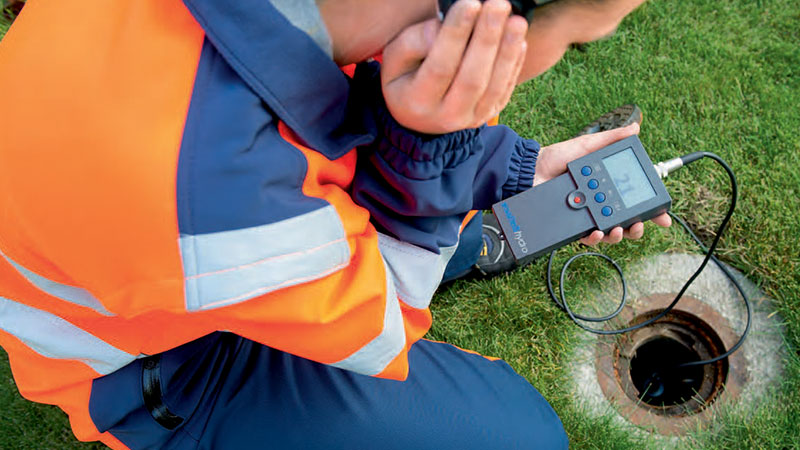The Significance of Routine Water Leak Detection for Long-Term Home Security
The Significance of Routine Water Leak Detection for Long-Term Home Security
Blog Article
Ingenious Solutions for Early Discovery of Water Leaks in Structures and Facilities
From cutting-edge leakage discovery technologies to the implementation of IoT sensors for real-time monitoring, the landscape of leakage avoidance is developing rapidly. Automated water circulation analysis systems are improving exactly how leaks are identified and dealt with, leading the means for an aggressive technique to water leakage discovery.
Advanced Leak Detection Technologies
Advanced leakage discovery modern technologies, furnished with innovative sensors and formulas, play a critical function in swiftly recognizing and identifying water leakages in different setups. Electromagnetic sensors can recognize modifications in electro-magnetic fields created by water, providing yet an additional layer of leak detection ability.

IoT Sensors for Real-Time Tracking
In the realm of modern water leak detection, the combination of IoT sensing units for real-time surveillance stands for a critical development in improving positive leakage discovery capacities. These sensing units use continuous tracking of water systems, supplying real-time information on water circulation prices, stress variations, and temperature level adjustments. By leveraging IoT modern technology, these sensing units can spot also the tiniest anomalies in water usage patterns, enabling early identification of potential leaks prior to they intensify into major problems.
IoT sensors transmit information to a centralized system, where sophisticated algorithms evaluate the information and generate alerts or alerts when irregularities are discovered. This real-time tracking ability allows homeowner or facility managers to quickly deal with leaks, decreasing water damages, decreasing repair work costs, and preserving water resources.
Additionally, IoT sensing units can be incorporated with structure administration systems, permitting automated feedbacks to identified leakages, such as shutting down water valves or activating pumps to minimize the influence of leakages. On the whole, the implementation of IoT sensing units for real-time tracking dramatically enhances the performance and performance of water leakage detection in structures and facilities.
Artificial Intelligence Algorithms for Leak Prediction

One key advantage of using machine learning for leak forecast is its capability to constantly discover and improve its accuracy with time. As even more data is accumulated and fed right into the formula, it can improve its forecasts and adapt to altering conditions, ultimately increasing the reliability of leak detection systems.
In addition, equipment understanding formulas can aid in determining subtle signs of leakages that may go undetected by conventional monitoring approaches. water leak detection. By evaluating intricate information sets in real-time, these formulas can offer very early cautions and notifies, permitting for timely intervention and preventative maintenance to mitigate possible water damages and connected costs
Making Use Of Thermal Imaging for Leak Discovery
Thermal imaging innovation offers an encouraging technique for identifying water leaks in various systems and frameworks. By using infrared radiation and temperature level variances, thermal imaging cams can identify concealed leaks that are not easily noticeable to the naked eye. When water runs away from pipes or structures, it frequently transforms the temperature of the surrounding area, producing temperature level differentials that thermal electronic cameras can capture. These temperature irregularities are after that converted he has a good point into visible pictures, highlighting the specific location of the leak.
One of the key advantages of thermal imaging for leakage detection is its non-intrusive nature. Unlike conventional techniques that may call for burglarizing wall surfaces or floorings to find leaks, thermal imaging enables non-destructive testing. This not only saves time and reduces prices but also minimizes disruption to the structure or framework being examined. In addition, thermal imaging can promptly scan big areas, providing a comprehensive review of possible leakage resources in a timely fashion. Generally, the use of thermal imaging modern technology enhances the performance and accuracy of water leak detection, making it a valuable tool for keeping the stability of buildings and infrastructures.
Automated Water Flow Analysis Systems
Just how can automated water circulation evaluation systems change the discovery and monitoring of leaks in various systems and frameworks? Automated water flow evaluation systems offer a positive approach to leakage discovery by constantly keeping track of water circulation prices and patterns. By establishing baseline data, these systems can promptly recognize variances that may indicate a leakage, enabling punctual intervention to prevent comprehensive damage.
These systems make use of advanced algorithms to examine real-time data and offer instant best site informs when anomalies are identified, enabling speedy activity to be taken. Furthermore, automatic water circulation analysis systems can be incorporated with building monitoring systems or IoT platforms, improving total performance and making it possible for remote monitoring capacities.
Furthermore, the data gathered by these systems can be used for predictive maintenance functions, assisting to identify prospective weak points in the infrastructure before leakages happen. On the whole, the application of automated water flow analysis systems can significantly boost leak discovery and management methods, eventually bring about set you back savings, minimized water wastage, and raised sustainability in buildings and facilities.

Final Thought
Finally, the combination of innovative leakage detection technologies, IoT sensing units, device learning formulas, thermal imaging, and automated water flow analysis systems offers cutting-edge options for early discovery of water leaks in buildings and infrastructure. These innovations enable real-time surveillance, prediction of leakages, and efficient detection approaches to stop water damages and wastefulness. Applying these services can assist in maintaining the integrity and sustainability of water systems in numerous settings.
Report this page